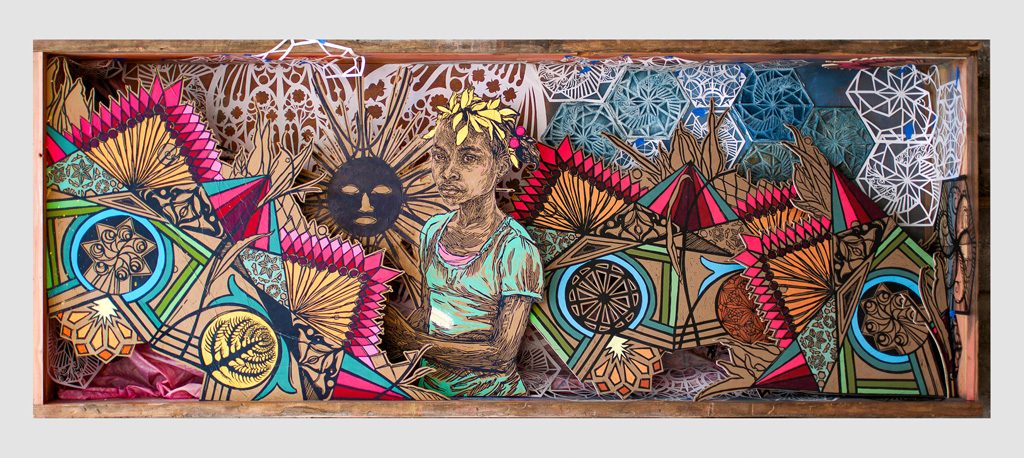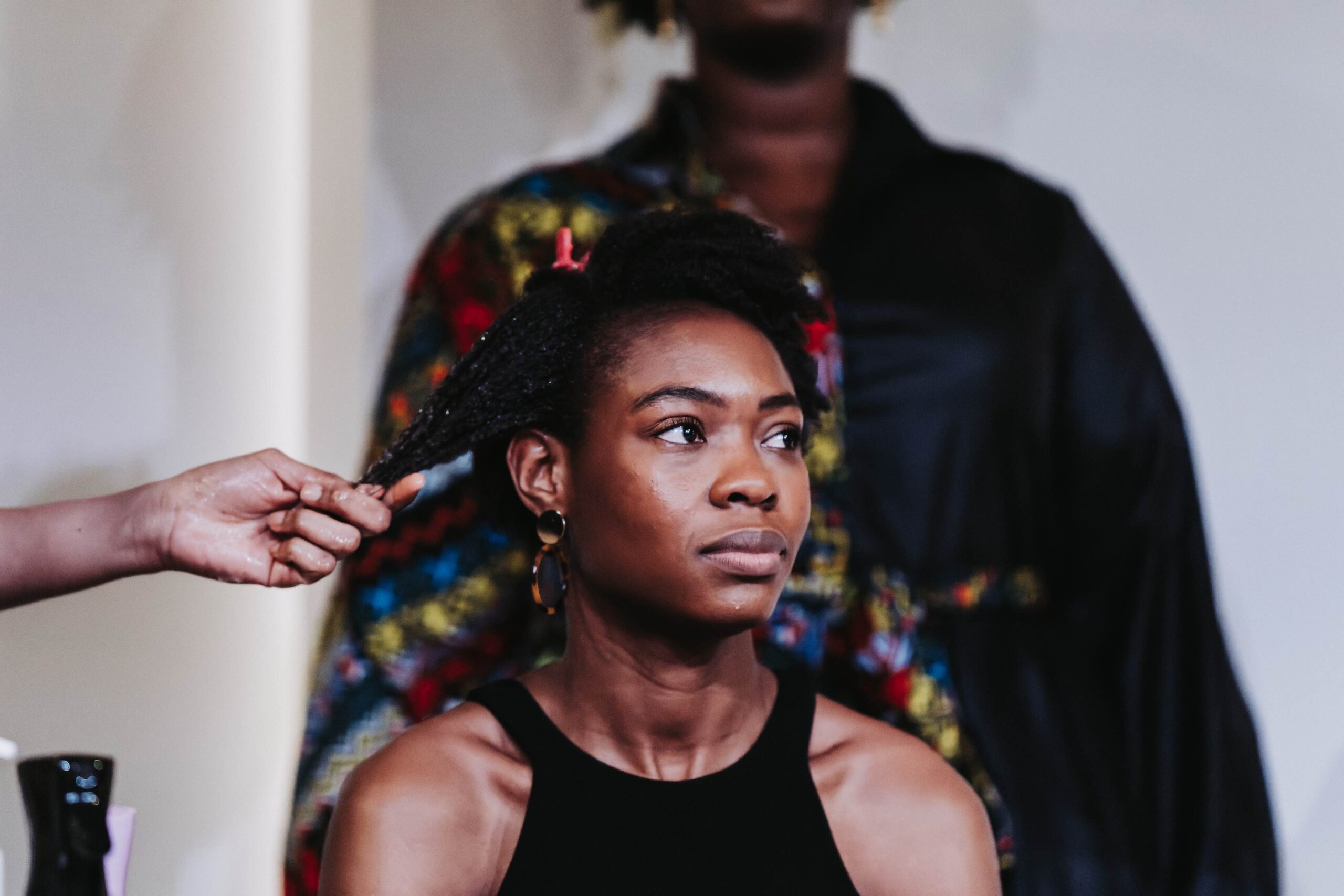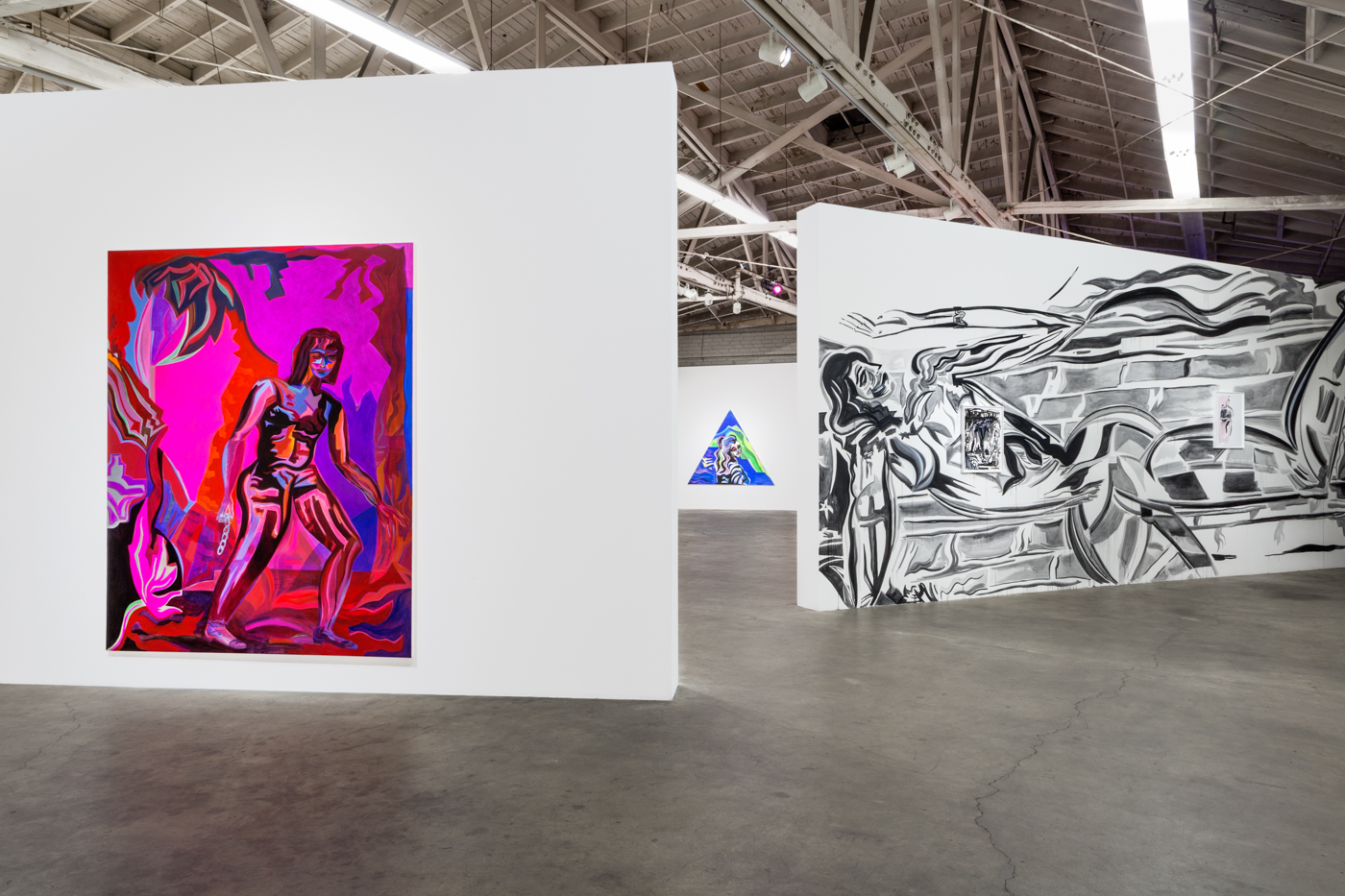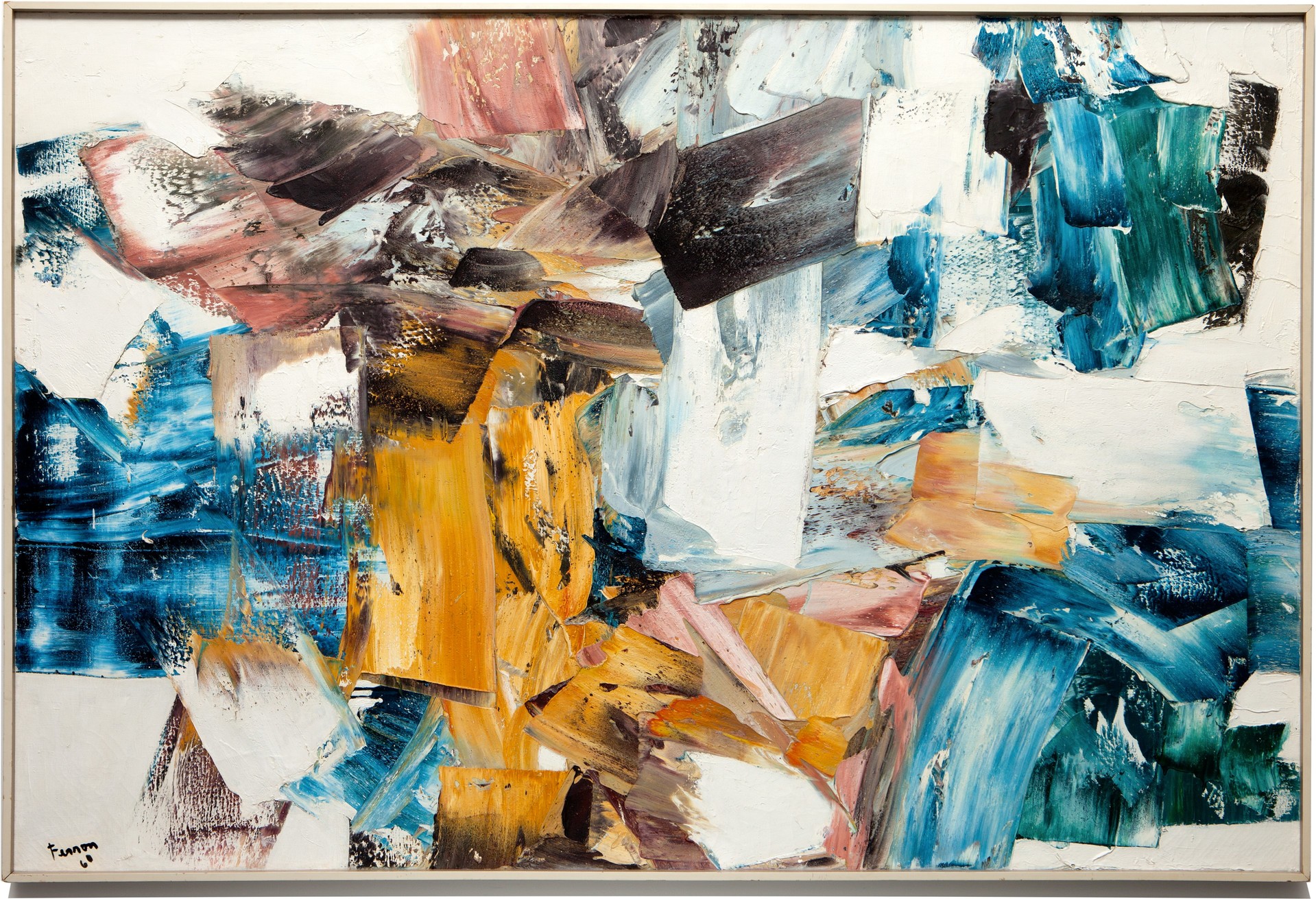Husband and Wife Co-CEOs of Saskatoon’s Remai Modern Plan a Collective Way Forward
Two's company.
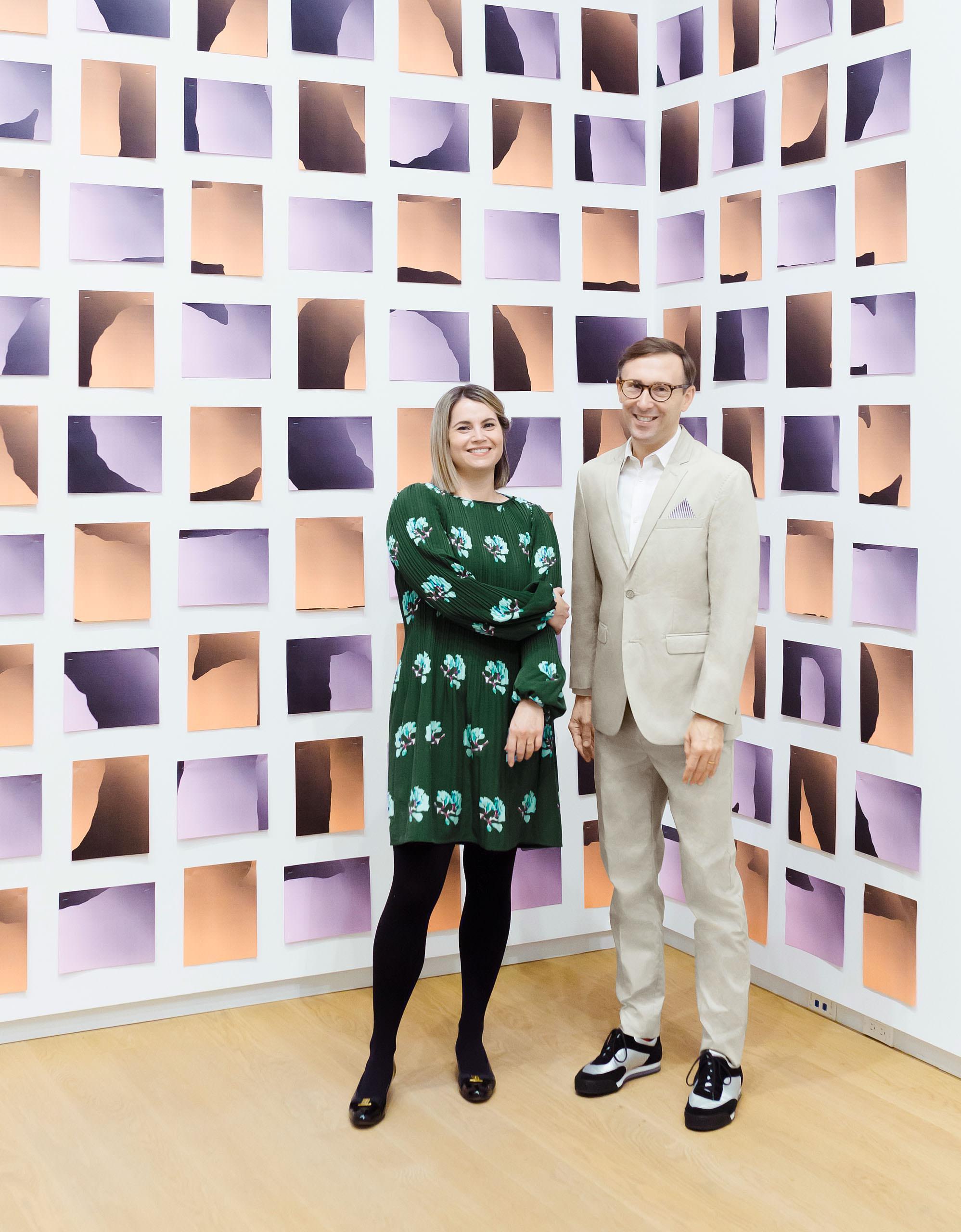
Artwork pictured is by Raymond Boisjoly, Some Things Remain Themselves Even When They Change, 2017, inkjet on construction paper.
At Saskatoon’s Remai Modern, Aileen Burns and Johan Lundh are proving that two heads are indeed better than one. In April 2020, the Prairie art museum with world-leading ambitions named the Canadian-Swedish duo its new co-CEOs and executive directors, an unorthodox appointment that sees the pair sharing all job responsibilities and taking home one salary. Burns and Lundh, partners in work and life, have run cultural institutions together in New Zealand, Australia, and Northern Ireland, and have built a reputation for steady leadership, strategic business sense, and sharp curatorial acumen. They took the helm at the Remai over the summer and swiftly got to work restoring the sheen of potential to an organization that has been battered by controversy since opening just three years ago.
Even notwithstanding starting a new job in an unfamiliar city in the middle of a pandemic, Burns and Lundh face numerous challenges in their latest roles. They must serve as a stabilizing rudder for an administration rocked by significant departures; implement progressive ideals to establish an authentic institutional voice; and win the trust of diverse community stakeholders. They also plan to improve the sustainability record of the museum and assess the contents of its vast collection. With their balanced and measured approach, Burns and Lundh are confidently steering Remai Modern toward becoming Canada’s most exciting new venue for contemporary art.
But first, there’s a whole new way of living and working to adjust to—a condition shared the world over thanks to COVID-19. “A big part of our job is being out there meeting people and getting rooted in the community. That’s been tricky, to say the least,” Lundh says over Zoom. For the time being, their teams are taking turns working from home, and the new transplants have been coming up with creative solutions for meeting people outside the organization, such as conducting studio visits over video calls.
“I hope that we will emerge from this questioning some assumptions about museums, because we’re not a very sustainable sector,” Lundh says. “We fly a lot. We ship a lot. We use materials in the short term and tear them down,” Burns adds. “It does make you think, what has changed in my work life that might be a part of a positive return, and how can we maintain some momentum and responsibility after the pandemic? It’s a question that has to be front of mind if we’re going to protect the world for human and nonhuman species in the future.”
“It’s by working from a place of collaboration that we can start to have a different kind of institutional voice. It’s about undoing singular authorship and starting from a position of plurality and hoping for a polyphonic institution by splitting the core decisions.” — Aileen Burns
While it’s not under ideal circumstances, this slow introduction that prioritizes people’s well-being is likely to set the tone for a happy transition of power. Since opening in October 2017, Remai Modern has had an inordinately high rate of turnover at both the board and staff level. Most notable was the December 2018 resignation of inaugural CEO and executive director Gregory Burke, who became the target of a highly publicized investigation into allegations of workplace harassment. (A complaint made to the Saskatchewan Human Rights Commission was settled in November 2020.) The museum also lost its chief curator and seven board members before interim CEO and executive director Lynn McMaster came in to steady the ship in April 2019.
In the media hailstorm, attention was diverted from what the City had hoped would be the main news story: Saskatoon had its very own world-class new art museum, a striking architectural landmark five times the size of its predecessor, the Mendel Art Gallery, which served the community for 51 years. Remai Modern represented an investment of over $119 million of combined private (from namesake philanthropist Ellen Remai) and government funds, and would be home to the world’s largest collection of Picasso linocuts. In short, it would establish Saskatoon as a player on the global arts stage.
“The museum only had a year and a half of doing what it was meant to do, and then all this turmoil ensued,” Lundh says. “But in the meantime, the curators kept working, and we have a lot of successes to celebrate there.” Burns and Lundh are eager to shift the focus back onto art. They see exhibition-making as a group effort where everyone from the artist to the art handler to the PR rep has a hand in a show’s success. “It’s by working from a place of collaboration that we can start to have a different kind of institutional voice and way of working,” Burns explains. “It’s about undoing singular authorship and starting from a position of plurality and hoping for a polyphonic institution—cacophonous, even—by splitting the core decisions.”
Lundh points out that curating by committee is standard nowadays in international biennials. Indeed, the next edition of documenta fifteen, taking place in 2022, will be curated by Indonesia’s ruangrupa artist collective, which has 10 members. Some other institutions have adopted the model, such as Kunsthalle Wien, which since 2019 has been run by Croatian curatorial group What, How & for Whom—but it’s rare to find arrangements where people share a home as well as an office. “Our life and work flood into each other, which means that we have to make some compromises but not others,” Lundh says. “But more important is that, because we are this dynamic duo, there’s never just one answer; there’s always a conversation about every decision. That is something that we try to get from our team as well, to see things from multiple points of view and not expect that there is one master’s voice.”
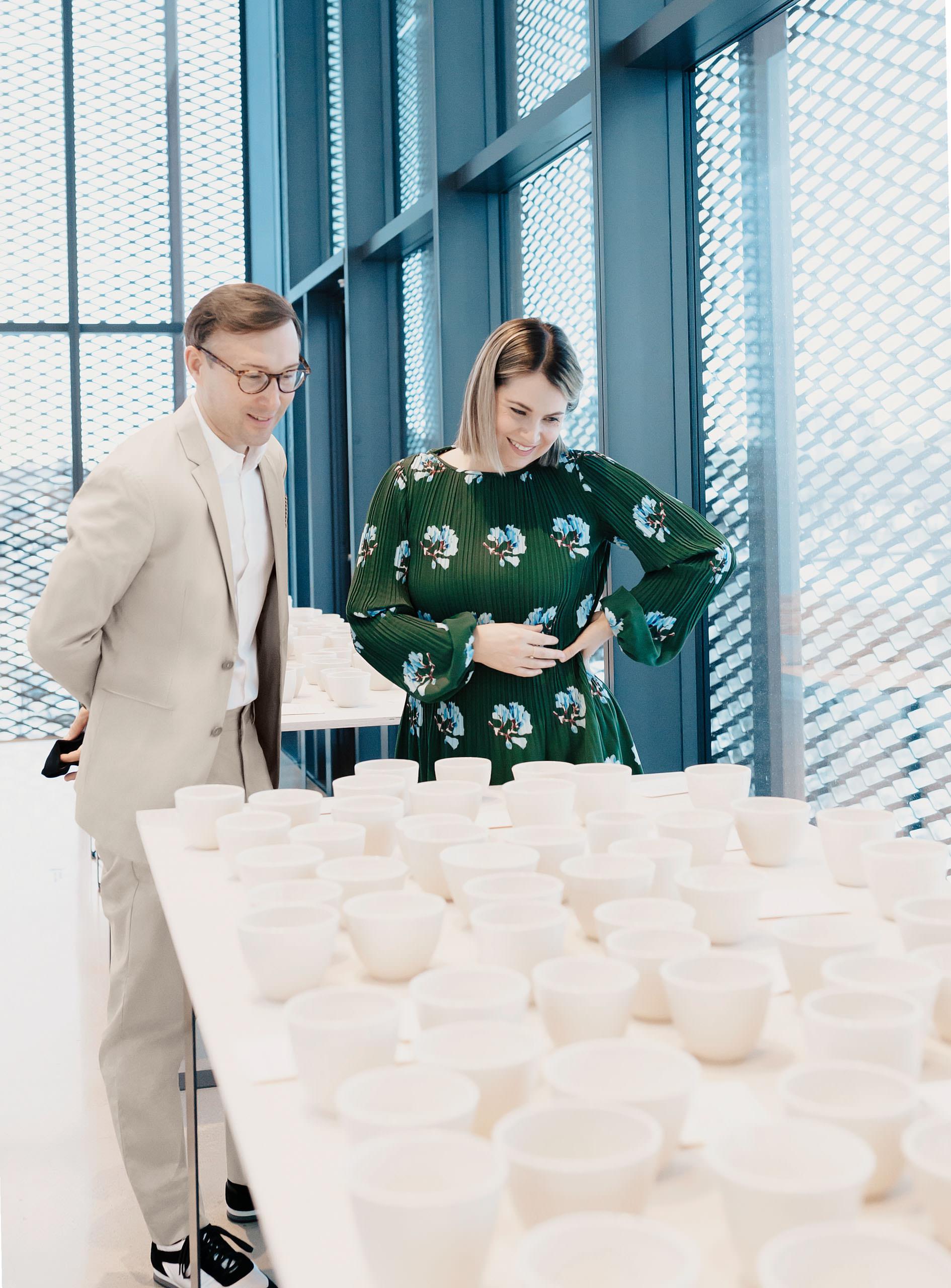
Artwork installation pictured is by Nurgül Rodriguez, Out of Place, 2019–2020, composed of 1,095 glazed porcelain cups representing the number of days it took for the artist to become a Canadian citizen.
This attitude is right at home in Saskatchewan, which has a rich collectivist ecology. It is where Tommy Douglas, father of democratic socialism in Canada, implemented North America’s first universal health insurance. In the arts, especially, Saskatchewanians believe the best results come from working together. From 1955 to 1995, the famed Emma Lake Artists’ Workshops invited celebrated artists and critics to Saskatchewan for collaborative sessions. The Saskatchewan Arts Board (SK Arts) is the oldest public arts funder on the continent, and some of the country’s earliest artist-run centres started here—a spirit kept alive at AKA artist-run, PAVED Arts, and Tribe Inc.
Burns and Lundh have worked as a team since 2010 when they met as tenants in the same apartment in New York. “I moved in and never moved out,” Lundh laughs. “It started off as writing together,” he says, “but the big decision we took, which is what has ultimately led us here, was when we applied to a space in Northern Ireland.” They had already moved from New York to Berlin, and they realized they could either compete for the same jobs or take a risk and apply as a team. That risk paid off when the Centre for Contemporary Art in Derry~Londonderry hired them as co-directors in 2011. “In terms of trying to create a different kind of life, we’ve come from a politicized, pragmatic position,” Burns says. “We both are extremely passionate about contemporary art and art’s role in society, but we weren’t willing to sacrifice the possibility of not having a family life or friends, and usually it’s women who have to sacrifice in order to make change in the arts. Because we share one job, we can carve out the time to create a different kind of balance so that neither of us is, in the long term, taking a step back, which is very unusual for women today.”
They married in 2013 and moved on to run the Institute of Modern Art in Brisbane, Australia. Daughter Hilma was born in 2018, and in 2019 the family moved to New Plymouth, New Zealand, to take on the joint role of co-directors and chief curators at Govett-Brewster Art Gallery/Len Lye Centre. Remai Modern is the largest institution they have worked at, with four levels, 11 gallery spaces, and a population of just over a quarter of a million people to serve. It’s the fourth time Burns and Lundh have headed an art institution in a smaller city in a country with a strong colonial legacy. “We’re either in the heartland or flyover country, depending on how you see it,” Lundh says. “The closest city with over a million people is Calgary, which is a five-hour drive away. So we’re isolated, but we’re also connected: the plains landscape here goes all the way to central Texas, and for Indigenous groups, the U.S. border is only a recent dividing line. Instead of seeing it as us being in the middle of nowhere, we’re actually in the middle of everything, the middle of Turtle Island. There are a lot of historical and recent connections here that we’re keen to explore.”
Last summer, Remai Modern hired Tarah Hogue as its first curator of Indigenous art. “We’re on the start of a journey,” Burns says. “This institution can’t move towards Indigenizing because it’s the politically correct thing to do or because it’s interesting in the art world right now; we have to do it because that’s our audience. Those are our artists. That’s the community here.” She quotes a statistic that says by 2050, at least 50 per cent of Saskatchewan’s population will be Indigenous. “For all Canadians from settler backgrounds, it has to be a lifelong ambition to learn what it means to live on treaty lands or unceded territories, depending on where you land on that issue,” she says.
“Collecting is not a neutral activity. We need to question our urge to accumulate things, and question what we accumulate. Can it be things other than objects? Can it be relationships?” — Johan Lundh
Burns and Lundh are planning to spend the next year doing a lot of listening while they embed themselves in the community and will focus mostly on strategic planning and organization at the museum. Part of this will include a statistical analysis of the collection, which stands at around 8,000 objects. “Collecting is not a neutral activity,” Lundh says, pointing to the colonial practice of stealing objects from other cultures and putting them on display. “We need to question our urge to accumulate things, and question what we accumulate. Can it be things other than objects? Can it be relationships?”
They note that there are some significant holes in the collection: “She’s the most famous modernist painter from the Prairies, but you’d have to fly to the Museum of Modern Art in New York to see a good Agnes Martin,” Lundh says. But backfilling would be exorbitantly expensive, and they have no intention of emulating MoMA. “The 20th-century museum is a cold, sophisticated space that is alienating for a lot of people,” Lundh observes. So what does a 21st-century museum look like? “It should be a social, warm space that invites people in.” Burns recollects visiting the Art Gallery of Ontario (AGO) as a child growing up in Toronto and how seeing certain artworks—such as Claes Oldenburg’s 1962 sculpture Floor Burger, which is part of the AGO’s permanent collection—helped shaped her view of what was possible. “Collections are places people can return to through their life. They’re these touchstones that can build a space of belonging for people through art.”
The late Stephen E. Weil, a leading cultural theorist, wrote that a museum must earn its keep by going “from being about something to being for somebody.” For the local community, whose taxes have supported the construction and operation of Remai Modern, it will be encouraging to hear that Burns and Lundh consider a close connection with them foundational to their purpose. “There is ambition to formalize relationships with stakeholders in the community and make them part of the institution,” Lundh says. What may emerge as truly modern at the Remai might not only come in the form of works of art but also in a management that welcomes feedback from the many voices it invites to the table. “I do think that’s the way that the world is going,” Burns says. “We need to fracture singularity and create space for multiplicity. And, you know, in our little way, we try to do that every day. And we hope and intend for that to echo out through the institution.”
To see more photography of the Remai Modern CLICK HERE.





